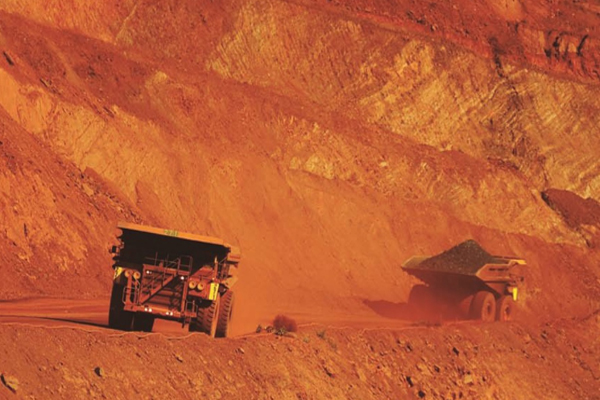 The price of iron ore dropped for the 12th session in a row on Wednesday falling through the psychologically important $50 a tonne level as bearish fundamentals overwhelm the sector.
The price of iron ore dropped for the 12th session in a row on Wednesday falling through the psychologically important $50 a tonne level as bearish fundamentals overwhelm the sector.
On Wednesday the benchmark 62% Fe import price including freight and insurance at the Chinese port of Tianjin declined 2.6% to $49.50 a tonne, the lowest since mid-July and down 11% in just two weeks according to data provided by The SteelIndex. In July, the steelmaking raw material on a spot price basis, fell to a record low of $44.10.
China forges 46% of the world’s steel and consumes for more than 70% of the world’s seaborne iron ore trade, but years of overproduction and unprofitability at the country’s giant state-owned mills are now bringing 30 years of growing output to screeching halt.
China’s largest steel producers had combined losses of CNY28 billion yuan ($4.4 billion) in the first nine months of 2015, according to the China Iron and Steel Association as mills struggle to remain profitable amid a saturated domestic market. Shanghai rebar prices continued to languish on Wednesday with the benchmark futures contract coming close to dipping to a fresh record low of a shade over $280 a tonne.
Crude steel output in the country continued to shrink in September, down 3% to 66m tonnes while year to date output has declined more than 2%. Ongoing losses and promises by Beijing to overhaul the country’s creaking state-owned enterprise will lead to further production cuts. The World Steel Organization forecasts steel demand in China will shrink by -3.5% this year.
Last week the chairman of one of the largest steelmakers Shanghai Baosteel’s Xu Lejiang, said the country’s steel demand is weakening at “unprecedented speed” and forecast nationwide output may eventually slump 20%, mirroring similar developments in Europe as the US and markets matured.
While moderating demand in China can take the blame for the recent weakness, a surge in low-cost supply will likely push prices down further towards the end of the year and next.
“It’s going down significantly,” Katie Hudson, managing director and senior investment manager at Goldman Sachs Asset Management Australia told the Financial Review on Wednesday:
“The major producers are adding incremental volume at around $US20 a ton, that gives you a sense of where the vulnerability is.”
Iron ore miners invested north of $100 billion in new projects and expansions since the start of the decade and most of those projects are now delivering or will do so soon.
The big three producers are following a scorched earth policy of raising output and slashing costs to weather low prices and push out competitors.
This week top producer Vale announced record third quarter shipments of 88 million tonnes despite idling 13 million tonnes worth of high cost operations. More astonishing is the fact that the Rio de Janeiro-based company was able to reduce cash costs to just $12.70 per tonne (it’s in the high teens at Rio Tinto and BHP).
Vale is not stopping there, its 90 million tonnes per year S11D expansion in the Amazon is 75% complete and according to the company that could push costs below $10 a tonne.
After a near 15% year-on-year surge in output in the third quarter Rio is well on its way to reach 360 million tonnes in the next few years, while BHP Billiton which grew production 6% last quarter is on target to grow capacity to 290 million tonnes per year some time during 2017. World number four producer Fortescue Metals added 5% to its targeted output hitting a rate 165 million tonnes per year in July.
Unlisted miner Hancock Prospecting’s Roy Hill is on the verge of shipping its first ore from its Pilbara mine which has a 55-million tonnes-a-year capacity. That would place it within shouting distance of Anglo American which is predicting 53 million tonnes for this year before its Minas Rio mine ramps up to capacity of 26 million tonnes in 2016–2017.
4 Comments
Restless Boomers
The 2nd Great Depression is unfolding, to be followed by massive social upheaval and heads rolling for the 1% who caused this.
gdcox
Overproduction of iron ore will not cause a depression . Consumers of steel are gaining!
Anopheles
A huge problem with China is they have borrowed trillions of dollars (upwards of $30 trillion) to build infrastructure and urbanize the country. Look up “ghost cities” in China. They have been building in anticipation of urbanization. These cities will fill up, but there’s a surplus right now.
This is where a lot of the steel has been going the past decade, and it’s been fuelled by borrowing. With the borrowing halted, the entire cycle will break down.
joyce
natafuta mnunuzi wa iron ore niko tanzania